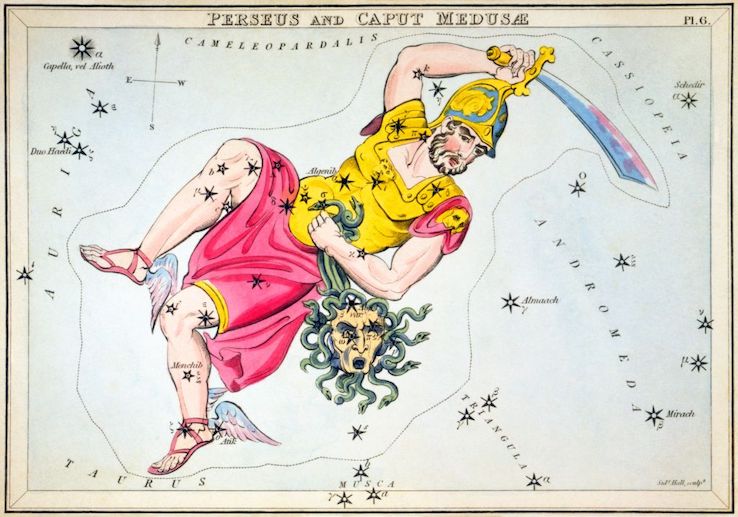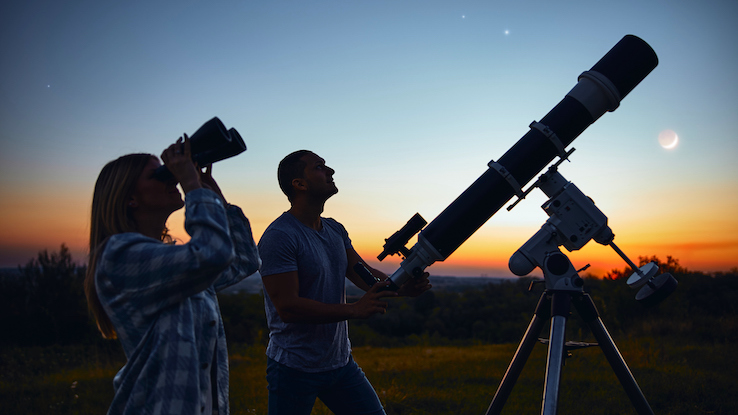Perseid Meteor Shower: When, Where and How to Watch

Few nighttime events inspire wonder and awe quite like a meteor shower. That’s why many stargazers look forward to annual events like the Perseid Meteor Shower. During most years, the Perseid Meteor Shower is highly visible, making it one of the best times to set your sights on shooting stars.
However, there’s a somewhat unique factor to the 2022 Perseid Meteor Shower that alters viewing conditions. So, it’s wise to plan a bit to ensure you get the best show. If you want to prepare, join us for a look at the Perseid Meteor Shower and learn details about its discovery, when it occurs and the best ways to watch.
What Causes a Meteor Shower?
Meteor showers are breathtakingly beautiful events that occur for one reason. As the earth travels its orbit, it passes through space debris. Often, that debris contains rock and dust left by comets and asteroids. As Earth passes through, some of the debris enters the atmosphere. At that point, the rocks and dust start burning up during the entry process. When that happens, it creates visible light, giving viewers the spectacular visual show that is a meteor shower.
The Origins of the Perseid Meteor Shower
As mentioned above, meteor showers occur when Earth passes through debris, including that created by comets. In the case of the Perseid Meteor Shower, the comet responsible is the Swift-Tuttle comet, also known as 109P.
The Swift-Tuttle comet was originally discovered independently in 1862: by both Lewis Swift and Horace Tuttle. Researchers have estimated the comet’s size. It measures in at about 16 miles across, which is more than twice the size of the object that some believe led to the extinction of the dinosaurs.

The Swift-Tuttle comet ultimately takes 133 years to travel around the sun just one time. It was closest to the sun in 1992 and won’t be back at that distance until 2125. As with all comets, Swift-Tuttle leaves behind debris. It’s this debris that creates the Perseid Meteor Shower.
How Did the Perseid Meteor Shower Get Its Name?
The Perseid Meteor Shower got its name for one specific reason. Based on when they occur and their path across the night sky, the shooting stars in this shower appear as if they originate from the Perseus constellation. The constellation is referred to as the meteor shower’s radiant due to the fact the meteors visually appear to be coming from it.
One way to improve your viewing experience is to identify the Perseus constellation in the sky before you watch the shower. That allows you to focus on the area where the activity is usually the highest. If you aren’t sure where it is, you can use a sky map as a guide.
When Is the Perseid Meteor Shower?
The Perseid Meteor Shower is an annual event. Usually, it starts near July 23 and continues until about August 22. During that window, it’s possible to see the event, giving many people ample time to catch a glimpse.
However, the Perseid Meteor Shower is normally at its peak starting around August 11 through August 13. During the peak, the number of meteors is far higher, often with about 50 sightings per hour.

While you can potentially view the Perseid Meteor Shower at any time during the night, the pre-dawn hours are usually the best time to see the event. You want to be in position well before the sun begins to rise; this helps you make sure you have about an hour or so of darkness left to enjoy the show.
Where Can You Watch the Perseid Meteor Shower?
It’s possible to catch glimpses of the Perseid Meteor Shower from anywhere in the world. However, as with the Quadrantid Meteor Shower, you have the best chance of catching a great show if you’re in the Northern Hemisphere.
Additionally, you want to make sure you’re facing the right direction. As mentioned above, you can use the Perseus constellation as a guide. However, if you’re in the Northern Hemisphere, looking north also gets you situated correctly.
If you’re in the Southern Hemisphere, looking toward the northeast may improve your viewing experience. However, there are times when only the mid-southern latitudes have a decent view. If you’re farther south, you might see little, if any, activity.
What Are the Best Viewing Conditions for the Perseid Meteor Shower?
If you want to watch the Perseid Meteor Shower this year, it’s important to know that the phase of the moon will likely alter your experience. During the peak of activity, there’s going to be a full moon. This introduces more light, which can wash out the light the meteor shower creates on its own.
However, when you plan to view the Perseid Meteor Shower during the pre-dawn period, the full moon has less of an impact on what you’ll see. At that time, the moon is at its lowest, so the light it creates won’t impact the display to the same degree.

Beyond that, you can take other steps to improve your experience. One of the most important steps is to get away from any cities or towns. Urban conditions – including light pollution and smog – may keep you from getting a clear view. Heading into more rural areas is a wise choice.
Additionally, make sure you arrive before the meteor shower is visible in the night sky. It can take time for your eyes to adjust to the darkness. Giving yourself a chance to settle in without any lights from your vehicle, flashlights or phone screens can help you see more clearly.
Finally, make sure you’re comfortable. Even if you’ve been enjoying hot summer days, the temperature can drop quickly once the sun goes down. Prepare to dress in layers and bring a blanket. You can also carry along a thermos of your favorite soup or hot beverage so you stay cozy even if it gets chilly.
Otherwise, just make sure you’re ready for a joyous night out. Invite family or friends to join you. That way, you can enjoy a memorable experience together — until next summer.





